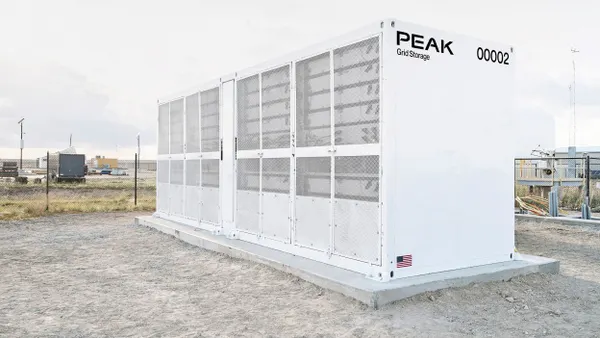Dive Brief:
-
American Electric Power may take six months to a year to find a new CEO, Ben Fowke, interim president and CEO, said Tuesday in an earnings conference call, a day after the company removed Julie Sloat, former chair, president and CEO from the position she had held since Jan. 11, 2023.
-
AEP will launch an external search for a CEO, according to Fowke, an AEP board member since February 2022 and a former Xcel Energy chair, president and CEO. “Ideally, you get somebody that is a seasoned executive in the utility industry, [and] is well known in the investor community,” he said. “It would be ideal if they have multi-jurisdictional experience and the ability to achieve regulatory success.”
-
Despite moving on from Sloat, it doesn’t appear that AEP has a new strategy, according to Paul Patterson, a Glenrock Associates equity analyst. “Nothing’s really changing,” he said. “It’s the same story but a different chapter.”
Dive Insight:
AEP’s board appears focused on improving regulatory results at its utilities, with a goal of “fixing” instead of divesting parts of its business it believes could contribute more under new leadership, Shahriar Pourreza, a Guggenhiem Partners equity analyst, said in a client note Tuesday.
“AEP is signaling that the company as a whole is in it for the long haul, aiming to repair damaged regulatory relationships, re-establish functional dynamics in its jurisdictions, and consistently execute going forward,” he said.
Earlier this month, Columbus, Ohio-based AEP agreed with activist investor Carl Icahn to expand its board with two Icahn-selected individuals, but it’s unclear that move is related to AEP moving on from Sloat, according to Patterson.
Fowke said removing Sloat was in “the best interest” of AEP and its stakeholders and that it wasn’t due to unethical behavior, disagreements around financial policy or a violation of AEP’s code of conduct.
Pourreza said it appears Sloat — who worked at AEP for 23 years — wasn’t the right fit for the company. Several key staff members recently left AEP and there were too many regulatory missteps, he said.
Last year was “challenging” for AEP, according to Fowke. AEP utilities had several unfavorable regulatory decisions in 2023. The company, for example, took an $86 million charge on a Public Utility Commission of Texas decision related to Southwestern Electric Power’s majority-owned Turk power plant in Arkansas. The decision could reduce the utility’s revenue by $15 million a year, according to AEP’s annual report with the U.S. Securities and Exchange Commission.
AEP will focus on improving regulatory outcomes this year, according to Peggy Simmons, AEP executive vice president of utilities. “What we're going to do is continue to build on the constructive legislative and regulatory outcomes that we have had,” she said. “We're going to further strengthen our regulatory relationships.”
AEP aims to increase the combined return on equity from its regulated utilities to 9.1% this year, up from 8.8% in 2023.
However, bolstering returns may be challenging, according to Patterson. “Some people are not in the mood for rate increases,” he said. For example, Illinois Gov. JB Pritzker, a Democrat, has been touting recent decisions to slash proposed utility rate increases, affecting utilities such as Exelon’s Commonwealth Edison, Patterson noted. AEP doesn’t operate in Illinois.
Rate increases can be buffered by load growth in AEP’s service territory, according to Chuck Zebula, AEP chief financial officer. “The data center load [growth] that we're experiencing is going to create an opportunity to spread fixed costs along a bigger base and improve the headroom opportunity,” he said.
AEP’s weather-normalized sales increased 2.5% last year, driven by a 7.8% jump in commercial sales, which include data centers, according to Zebula. The company expects weather-normalized sales to increase 1.5% this year and 3.3% in 2025, according to its earnings presentation.
Guggenheim’s Pourreza said AEP’s goal of limiting customer bill increases to no more than 4% a year could “prove very limiting in terms of the amount of capex that can be moved into rates to receive recovery ‘of and on’ that investment.”
After selling off its unregulated renewable energy portfolio last year, and aiming to finish the sale process for AEP Energy and AEP Onsite Partners by mid-2024, AEP has opted to retain its stakes in three transmission joint ventures: Pioneer Transmission, Prairie Wind Transmission and Transource.
”It's time for us as the leader in transmission to continue to lead that space,” Zebula said.
AEP on Tuesday sold its 50% stake in New Mexico Renewable Development to Exus North America Holdings for about $104 million. NMRD owns 185 MW of solar capacity and has about 440 MW under development.















